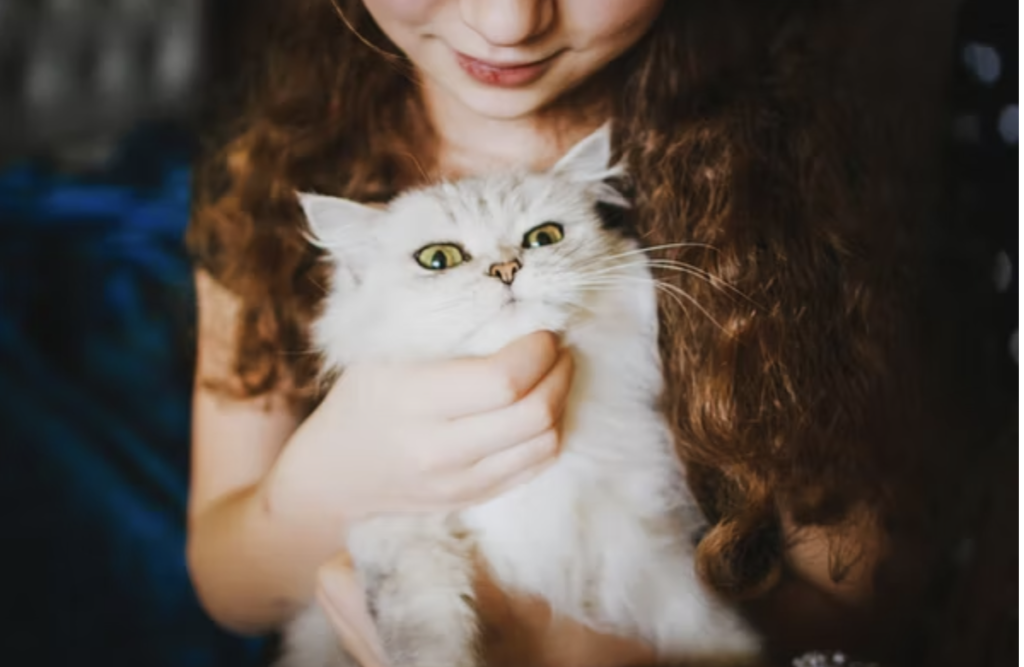It’s a common mistake for parents to assume that kids and cats will get on just fine immediately. Unfortunately, this isn’t always the case; while cats aren’t as overpowering as dogs, they still need to be treated with respect so that they don’t scratch or bite. Plus, if you want your child and cat to bond, there are certain lessons you need to teach.
Read on to learn how to nurture a harmonious relationship between your cat and child.

Establish Boundaries Early On
Before bringing the kitten into the home, establish your boundaries and rules. If your child is old enough, talk to them about how to pet a cat and when to leave them alone. You may also put up baby gates to allow the cat to get away from people when needed.
Once the cat is home, it’s important to establish rules for them, too. For example, if you don’t want them on particular furniture items (the dining table, for example) stay consistent with telling your cat to get down.
With rules established early, it makes keeping everything in order a little easier, which, in turn, helps create more stable relationships.
Introduce Them Slowly
Before bringing your cat home (or your baby if you already have the cat), first think about how you’re going to introduce them. You can’t expect them to be the best of friends without a good introduction!
The best types of cat and kid introductions are slow – maybe even only letting them interact for a few minutes at a time. You could even give your cat an item belonging to your child so they get used to their scent before meeting them. This will help reduce any nervousness and apprehension in your kitten.
Be a Role Model
Children learn a lot of their behaviour by watching their parents and copying. You can take advantage of this fact by being the perfect role model when looking after your cat! Show your little one how to properly stroke and play with the kitten – whether that’s gentle strokes on the head or using a toy to keep the cat’s attention. Eventually, your child will see what you’re doing and mimic you, leading to fun and safe playtime.
Keep Your Cat Healthy
A healthy cat is a happy cat, and a happy cat is less likely to lash out, potentially biting or scratching your little one. To keep your cat healthy, schedule regular vet visits when necessary.
It’s also a good idea to invest in cat insurance to avoid unexpected costs. With a good pet insurance plan, you can cover everything from medications to accidental injuries. Keeping your kitten in good health is always important!
Praise Positive Behaviour
Reward positive behaviours from your cat or your child as much as possible. You can give your cat treats when they play calmly and disengage when they are too rough. For example, you can simply walk away if they start biting your hand when you stroke them.
You can also reward your child for playing nicely with the cat by giving them words of praise. Over time, it will teach them that treating the cat with a gentle hand is correct.
Supervise Interactions
If your child is very young – say, under five years old – it’s essential to supervise all interactions. Even if you think your cat and child get along, there might be times when the cat feels stressed and lashes out due to your child being a little too rough.
By always being there to supervise playtime, you can ensure it doesn’t lead to scratches. Plus, you’ll have more time to reward good behaviours when you see it.
Let Your Kid Give the Cat Treats
Most cats are very food-motivated, so they will likely bond with those who give them treats. You can take advantage of this fact by letting your kid give treats to your cat! The more they do it, the more positively the cat will view your child. Just make sure you don’t give your kid free reign when it comes to feeding your kitten, as they might end up giving your feline friend one treat too many.
Teach Your Kid About Cat Body Language
Your kid will likely want to learn all about your new cat, so teach them! In particular, teach them lessons about a cat’s body language so that they know when a cat is happy and when it is irritated. Some signs that a cat is in a good mood include:
- Purring
- Grooming
- Kneading
- Slow blinks
- Nibbling
Other behaviours, such as a wiggling tail and hissing, indicate the opposite – that the cat wants to be left alone. By teaching your kid these different signs, they will know when it’s time to play and when it’s time to leave the cat alone. Your cat will appreciate it!
Give Your Cat Some Space
To create a strong bond between your child and cat, you should avoid shoving them in a room together at all times. While they might sometimes get along in this scenario, it may also lead to the cat feeling overstimulated and in need of some breathing space. So, make sure to provide just that. Your cat will appreciate a safe space to run off to from time to time, especially when your little one is in a playful mood and your cat wants to sleep! Remember – cats need an average of between twelve and eighteen hours of sleep a day!
Create a Fixed Routine
Cats enjoy routine, and the best way to keep them in a good mood every day is to establish a routine early on. That means figuring out when they’ll get fed and when their litter box will get cleaned – as well as who will do those chores. Doing this will help your cat feel safer and more stable in the household.
Let Your Kid and Pet Enjoy a Strong Bond
Cats are brilliant pets for kids. They are playful, funny, cute and full of personality. It’s not enough to simply bring a cat home, though – as the adult, you must create an environment that promotes a happy and friendly relationship. By doing this, your kid and cat will enjoy a strong bond for many years to come.











Leave a Reply